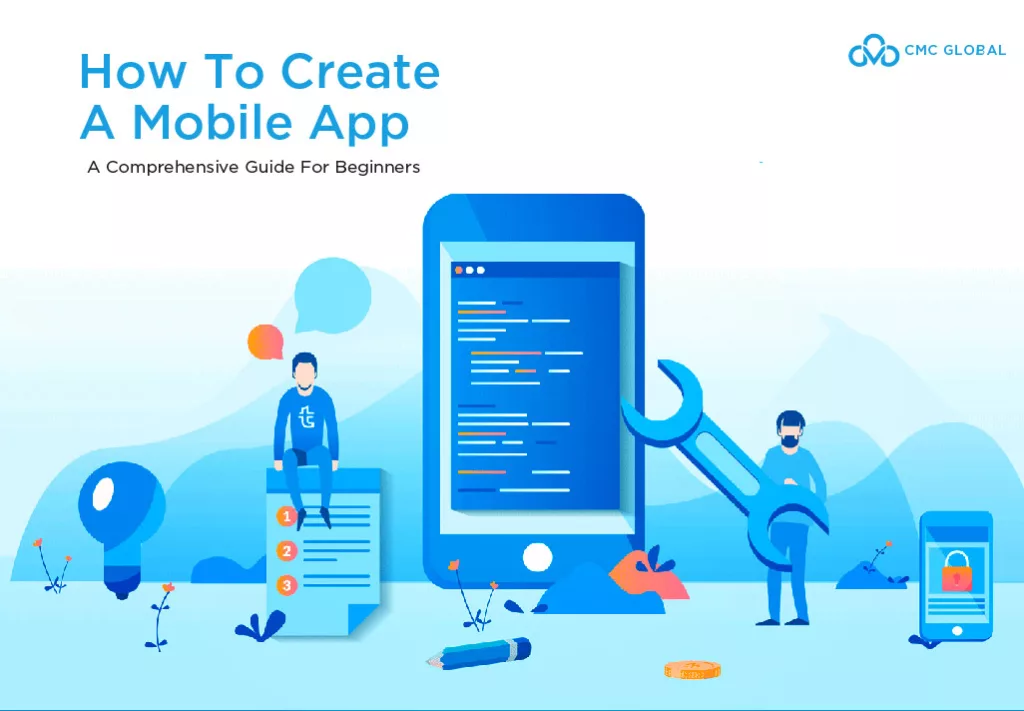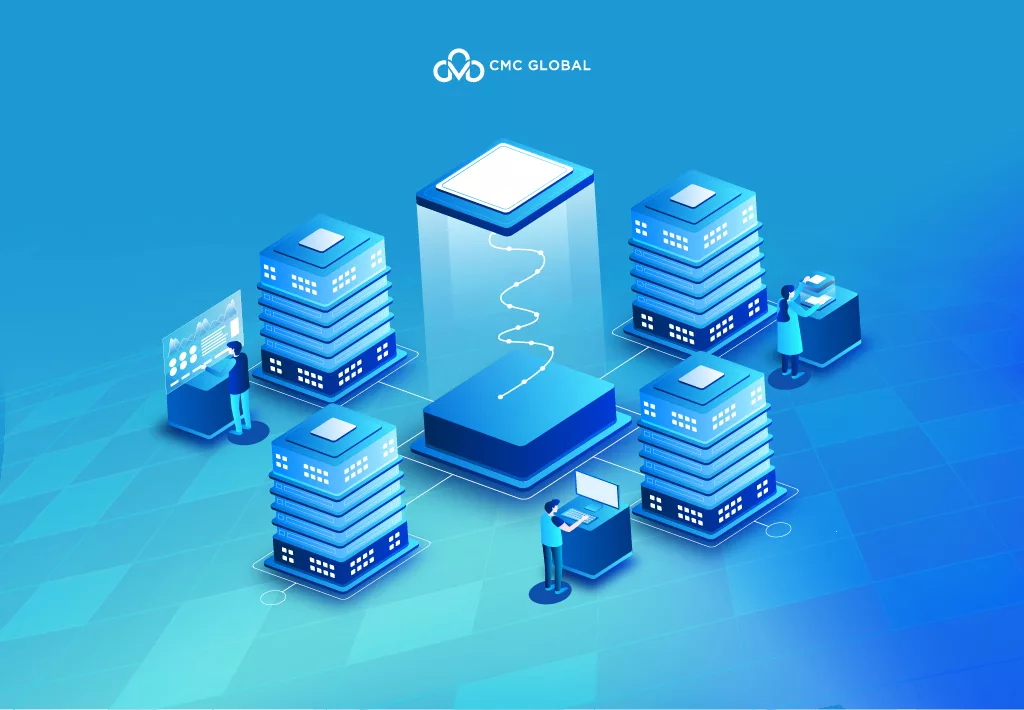There’s an app for everything, from small company applications to eCommerce apps, health apps, internal employee communication apps, religious apps, and more.
Apps can be created as an extension of an existing business or as a starting point for a new one. This article is for anyone who wants to create a mobile app, whether it’s for their business or to build the next Uber.
Types of mobile apps
Mobile apps, like desktop software, are created with a variety of programming languages and frameworks. Despite the fact that the most popular operating systems, iOS and Android, have done an amazing job of standardizing the types of mobile apps available to programmers, apps can still differ. Here are the main types of mobile apps:
Native apps
These are apps that are developed for a specific platform (iOS or Android) with the use of the software development tools and languages that those operating systems enable. iOS makes use of Xcode and Objective-C, whereas Android makes use of Eclipse and Java. Developers frequently prefer native applications because of their ability to exploit the capabilities of a device fully.
As smart home gadgets become more widespread, developers are designing one-of-a-kind applications that include wearables, Internet of Things sensors, and smart displays to provide personalized experiences. Of course, developing each platform is an expensive and time-consuming procedure that is not suitable for all organizations.
HTML5 apps
Based on near-universal web technology standards – HTML5, JavaScript, and CSS – this sort of mobile app offers a write-once-run-anywhere approach to mobile development. Apps created with this framework are cross-platform interoperable and require only minor adjustments to ensure full functioning on any operating system.
HTML5 apps can continue to deliver desktop alerts and initiate conversations via email and other channels. Don’t dismiss the usefulness of web apps, but bear in mind that users are more inclined to use a native app. According to an Oracle survey, millennials spend 90% of their mobile time in apps and 10% on web browsers.
Hybrid apps
Hybrid apps can be installed on devices like native apps, but they operate through a web browser. Hybrid apps are built with HTML5, so they are cheaper to develop while still having a higher performance boost over web apps.
Mobile app development requirements
The creation of mobile apps is continually evolving. Every six months or so, a new version of an operating system is released with new functionality that mobile apps can use. Developing for a certain version of the operating system, or even for a native operating system, typically necessitates developers testing numerous solutions to discover the one that best meets their development requirements.
Failure to keep up with development upgrades may result in disastrous cybersecurity risks. Consider the price of establishing an app, which can vary from $5,000 to $15,000, to begin with, plus ongoing development and maintenance fees. If Android or iOS publishes a new operating system update, you may be rapidly delisted for being incompatible.
Creating an app is only valuable if it is a fantastic app. Customers will leave if they have a bad user experience. Be careful of the user experience while remaining cost-conscious.
Mobile App Development Process
The app development process can be divided into six critical phases, regardless of the sort of project you wish to bring to life. By understanding these phases, you will be able to develop your app more quickly and efficiently.
- Idea: When brainstorming app ideas, conduct some research and answer a few questions about it. What problem does this program solve? Who is the target audience? What is the significance of these characteristics? Do your rivals offer applications that are similar to yours?
- Design: Next, you’ll develop a user interface (UI) to help the user navigate the software and comprehend it.
- Development: At this stage, you will write the app’s code, develop it, and begin preliminary testing.
- Testing: Testing your program allows you to determine its quality, defects, and places for development.
- Launching: When your program is bug-free and ready to go, you can release it through marketplaces like the Apple App Store and Google Play.
- Marketing: Create a marketing strategy to entice users to download your app and offer feedback on how to improve user engagement.
7 Most Important Things to Consider When Developing a Mobile App
Before you go into the first meeting to build a mobile app strategy, there are a few things you should think about. If you overlook these difficulties, you may end up with a failing app, which will cause you to lose time and money. When the bottom line suffers, people at the top look down with contempt. That is not what you desire.
So, how can you avoid such an issue? You explore a few critical concepts and challenges that will assist you in the success of your app launch. Let’s look into it and see what those items are.
What’s Your Elevator Pitch?
You may or may not have heard of the “Elevator Pitch,” but it goes as follows. You have the time it takes for an elevator to reach the floor of your target to pitch the app. How can you condense your app’s explanation into a short enough pitch to get your target’s attention before they exit the elevator?
This may appear to be silly, but it gets to the essence of what your app is all about. When you can develop a good elevator pitch, it implies you genuinely understand what your app is about—you understand what the app will accomplish and how users will benefit from it.
Surprisingly, the “Elevator Pitch” is more difficult than you think since you must completely grasp what your app really does and why a consumer would want to use it.
What’s Your Concept?
This is similar to the “Elevator Pitch,” except it’s more bottom-up. While the “Elevator Pitch” may be used to pitch your idea to CEOs, the notion is mainly about helping engineers understand what they need to do to make this work.
If an “Elevator Pitch” might be “Our app is an interesting shop centered on our items that helps begin purchases from mobile devices,” a concept might be “A dynamic SPA that uses both big data and hybrid cloud architecture to allow users to connect with our website from mobile devices more easily.”
What’s Your Market?
With your “Elevator Pitch” out of the way, it’s time to go deep into your market. Would your clients/consumers/customers use a mobile web browser or a mobile app to access your company’s online presence? Are they mostly Android or iOS users (or a combination of the two)? What is your market’s average age, education level, and socioeconomic status? What is your market’s principal location? And how technically savvy is your market?
These are all critical concerns that must be addressed; else, you will go into the development of your mobile app blind. This information will not only assist your developers in designing and developing the app, but it will also assist your marketing team in selling the app. It makes no difference how wonderful the software is if you can’t properly advertise it.
What Are Your Goals?
You must know what your goals are if you want to follow in the footsteps of the market. Do you intend to monetize the mobile app, or is it merely informative? Do you want to create a mobile app that can expand to meet global demand? Are you planning to integrate the mobile app with your website or other solutions? If you walk into your first development meeting without knowing what your goals are, you’ll discover that many attendees will leave unhappy or confused.
What About UX?
The term “UX” stands for “User Experience,” and it is a vital aspect. You may create the best mobile application in the world, but if the user experience is terrible, the app will fail. So, what exactly is UX? It’s all about the adventure. How simple is it to use your application? How user-friendly is the interface?
You don’t want to create a user interface that confuses those who use it. That is why you should devote a significant amount of effort to UX so that anyone who installs your app does not have first to read a user manual. Maintain simplicity, user-friendliness, and modernity.
What Are Your Resource Limits?
This will be a critical issue to address, especially as your app’s usage grows. If you expect a large number of users, you must be prepared with your databases, any needed cloud resources, and the data pipelines involved. If you don’t arrange your resources properly, you could end up with bottlenecks that slow down app performance.
If you understand your market and that it is worldwide, knowing your resource boundaries will allow you to prepare properly.
What Type of App Suits Your Business?
As mentioned, there are three options here: native mobile app, hybrid mobile app, or online app. Whichever path you take will have a significant impact on how you approach the development process. This decision might also be the difference between well-functioning software and one that gives you headaches.
So, if you want the greatest performance app and aren’t worried about cost, go with a native app. If you don’t care about performance and want the cheapest software that will work on every device, go with the web app. Choose the hybrid app if you need the middle ground.
Final words
If your company doesn’t have the expertise to execute your app development project in-house, it’s best to find a service provider to help you.
CMC Global is among the top three IT outsourcing services providers in Vietnam. We operate a large certified team of developers, providing a wide variety of stacks to help you build your application in the most cost-effective way and in the least amount of time.
For further information, fill out the form below, and our technical team will get in touch shortly to advise!




